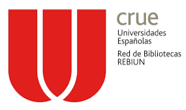La incidencia de las variables internas en la formulación de la política exterior del gobierno de Jair Bolsonaro en Brasil (2019-2020) los vínculos hemisféricos
DOI:
https://doi.org/10.35305/cc.139.186Keywords:
Foreign Policy, Brazil, Bolsonaro, United States, South AmericaAbstract
This article analyzes the brazilian foreign policy during the First two years of Jair Bolsonaro’s government (2019-2020), emphasizing its hemispheric ties to the United States and South America. Bolsonarism victory in the elections of October 2018 is framed within an international and regional conjuncture that is characterized by the rise of right wing political parties, being Donald Trump’s arrival at the White House in 2017 one of the most relevant factors for this paper. In this sense, this investigation aims to inquire over domestic actors’ influence in the formulation of Brazil’s foreign policy during this time, considering that the vision and interests of the sectors that conformed the governing coalition were reflected in Brazil’s alignment with Washington, as well as its ties to the South American region.
Downloads
Published
How to Cite
Issue
Section
License
Copyright (c) 2024 Kevin Genovese, Maximiliano Zuccarino

This work is licensed under a Creative Commons Attribution-NonCommercial-ShareAlike 4.0 International License.
Aquellos autores/as que tengan publicaciones con esta revista, aceptan los términos siguientes:
- Los autores/as conservarán sus derechos de autor y garantizarán a la revista el derecho de primera publicación de su obra, el cuál estará simultáneamente sujeto a la Licencia Creative Commons Reconocimiento-NoComercial-CompartirIgual 4.0.
- Los autores/as podrán adoptar otros acuerdos de licencia no exclusiva de distribución de la versión de la obra publicada (p. ej.: depositarla en un archivo telemático institucional o publicarla en un volumen monográfico) siempre que se indique la publicación inicial en esta revista.
- Se permite y recomienda a los autores/as difundir su obra a través de Internet (p. ej.: en archivos telemáticos institucionales o en su página web) antes y durante el proceso de envío, lo cual puede producir intercambios interesantes y aumentar las citas de la obra publicada.
















